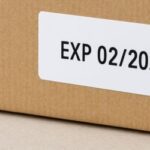Introduction: Shelf Life Is Not a Number, It’s a Strategy
Too often, shelf life is treated like a fixed, static number printed on a label—the inevitable result of a formula, test, or aging chamber. But for medical device manufacturers, shelf life is a claim that must be defended. It reflects not only the physical durability of a sterile barrier system, but also the rationale behind the validation approach. At Life Science Outsourcing, we routinely help clients navigate shelf life strategy from the ground up—not just by executing accelerated aging studies, but by helping them ensure their claims are scientifically and regulatorily defensible.
Understanding Accelerated Aging: Useful, But Not Infallible
Accelerated aging, typically performed under ASTM F1980, is built on the Arrhenius equation—the principle that elevated temperatures can speed up chemical degradation. It’s a widely accepted and efficient way to simulate the passage of time. However, it’s not without limitations.
Accelerated aging assumes that the only relevant mechanism of degradation is temperature-dependent chemical breakdown. It does not simulate real-world handling, transportation vibration, ambient humidity variation, or long-term physical fatigue. It cannot account for interactions between materials, or how inks, adhesives, and plastics may behave when exposed to light, oxygen, or stress over time. We regularly advise clients not to over-interpret these results or use them in isolation to set shelf life claims.
The Role of Real-Time Aging: When and Why It Matters
Real-time aging, by contrast, is the gold standard for verifying that your packaging system performs under actual storage conditions. It’s slower—but more robust. Regulatory bodies, including the FDA and Notified Bodies, increasingly expect real-time data to support or extend shelf life claims, especially for products with complex packaging, higher-risk classifications, or long claimed shelf lives.
While real-time data isn’t always required at time of submission, it is often requested later, especially during audits or post-market reviews. Manufacturers that rely exclusively on accelerated aging are often caught off guard when their assumptions are challenged. We encourage clients to think of real-time aging as part of a validation strategy, not an afterthought.
Combined Approach: Building a Shelf Life Justification That Holds Up
A strong shelf life program combines accelerated aging, real-time aging, and a clear narrative that links your data to your claims. We help clients craft shelf life justification reports that draw from multiple inputs: aging results, material data sheets, seal integrity and strength testing, and knowledge of worst-case configurations. The result is a shelf life claim that can stand up to regulatory scrutiny—because it was built with risk, not just math, in mind.
Overstating shelf life to satisfy commercial goals without supporting data is a short-term strategy that rarely ends well. We’ve supported clients through revalidation, remediation, and even recall-related rework due to shelf life assumptions that didn’t hold up. Our advice: test early, document thoroughly, and align your validation with your claims.
How LSO Supports Smarter Shelf Life Programs
At LSO, we don’t just run aging studies. We support medical device manufacturers in:
- Designing accelerated aging programs aligned with ASTM F1980 and ISO 11607
- Selecting worst-case SKUs and packaging configurations
- Managing real-time aging storage and monitoring across shelf life horizons
- Executing seal strength, dye penetration, and microbial barrier testing pre- and post-aging
- Developing shelf life justification reports that hold up during audits and submissions
We serve as an extension of your validation team—bringing regulatory awareness, risk-based thinking, and laboratory execution together in one place.
Conclusion: Shelf Life Isn’t Static—And Neither Is Risk
Shelf life isn’t a line in the sand. It’s a function of materials, process control, and scientific rationale. Whether you’re launching a new product, extending an existing claim, or remediating a weak validation, your shelf life strategy deserves the same attention as any other aspect of your sterile barrier system.
Ready to pressure-test your current shelf life justification? We’d be happy to help.
Bonus: Download the Shelf Life Planning Checklist
Want a quick reference to pressure-test your shelf life strategy? Download our Shelf Life Planning Checklist to review key factors in aging protocol design, sample selection, and justification best practices.





